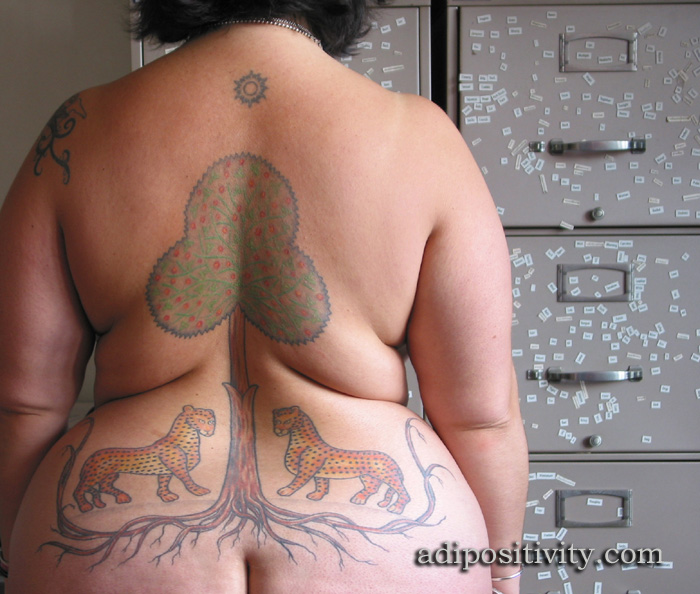
(Image Credit: Substantia Jones, Adiposivity.com)
Substantia Jones is an award-winning, Manhattan-based photographer whose work has been featured in The New York Times and showcased at galleries and shows throughout the Northeast. Her website, The Adipositivity Project, is dedicated to documenting and celebrating bodies that are typically invisible--except as negative examples--in modern media. In her own words, Substantia promotes size-acceptance "not by listing the merits of big people, or detailing examples of excellence (these things are easily seen all around us), but rather, through a visual display of fat physicality. The sort that's normally unseen."
I was thrilled to have the opportunity to exchange emails with Substantia and develop a post that would showcase some of her favorite photographs. Her answers to my questions are in bold. Many of the photographs below are NSFW.
Welcome to our blog, Substantia, and thank you for taking the time to talk with me. What role do you think images play in shaping our acceptance of different bodies and what role do you see your own work playing?
It's my pleasure, and thank you for your interest.
Images are as important in creating body acceptance as they are in creating body shame. My view of the role I play has changed over time. My original goal was widespread bombardment of fat-positive images, in hopes of changing mainstream minds, super-double-reverse-Clockwork-Orange style. Instead it's become something that has more of an impact on the subject, than on the mainstream. But increasingly I'm hearing from those who occupy the lower end of the size spectrum. Some revolutions are slow and steady. But no less effective.
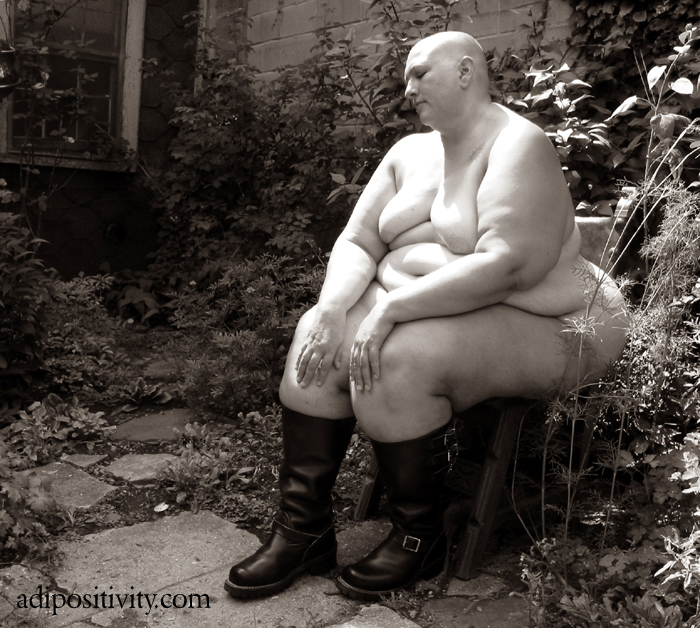
While so many people have found your photography inspirational and life affirming, I imagine it would be a bit terrifying to appear in them, especially since, as you say on your website, these are regular people, not models. How do you develop a rapport with your subjects and encourage them to reveal themselves in such vulnerable (though compelling) ways?
By the time someone contacts me and asks to be an Adiposer, I presume they've already done all the "Can I really drop trou for a stranger's camera?" work. Many lose their nerve during the scheduling phase (far preferable to losing their nerve during the me-ringing-their-doorbell phase, which has happened). But I think when (and if) they open the door, they see a smiling fellow fatty--a comrade--who wants the experience to be good for all involved. What we're doing is indeed ridiculous, so we usually laugh at lot. That helps. As does a cocktail.
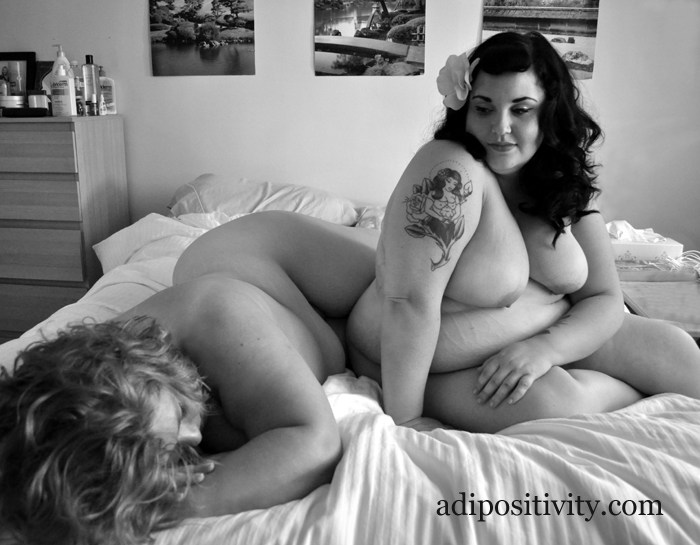
In your early photographs, the faces of your subjects are almost always concealed, and you had a very specific point to make with that choice. I've noticed that you include a lot more faces in your most recent work. Why the change?
Lately I've been interested in capturing how a fat person exists in their environment. Going faceless in that situation would make it appear that I've removed something which belongs in the image. That's not what I do. I'm perhaps also influenced by the fact that increasingly, Adiposers want their faces to be included. I still love the close-up detail shots, though. They'll never go away.
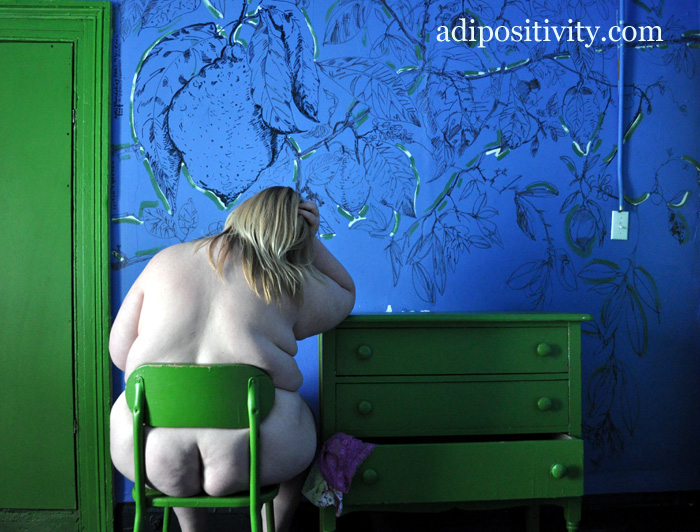
The choice to conceal faces always struck me as interesting given the "headless fattie" phenomenon in journalism about dieting and obesity. Those photographs, which usually just feature a disembodied stomach always seemed to be encouraging viewers to dehumanize fat bodies while simultaneously encouraging them to think "that could be me" and feel subsequent shame. Do you see yourself as subverting or playing off of that convention?
A disembodied stomach in a grease-stained T-shirt, no less. And usually moving much more slowly than those around them. Never do they show a fat belly bouncing along on a bike or a ball field. That wouldn't support the alarmist junk science they're purveying.
While it's a kick to co-opt the format and repurpose it to promote fat acceptance, I've never thought of it as particularly subversive. In fact, I believe it's among the least subversive things I do, perhaps because it wasn't the biggest motivator in my decision to put the observer's eyes on the vessel, rather than its contents. Subverting media's use of the grease-stained belly is certainly in the mix, but it's not among my top few reasons for doing it. It's primarily a creative choice, and one I think has been validated by the fact that Charlotte Cooper, the fierce London activist whom it's said first coined the term "headless fatty," has posed for The Adipositivity Project. More than once.
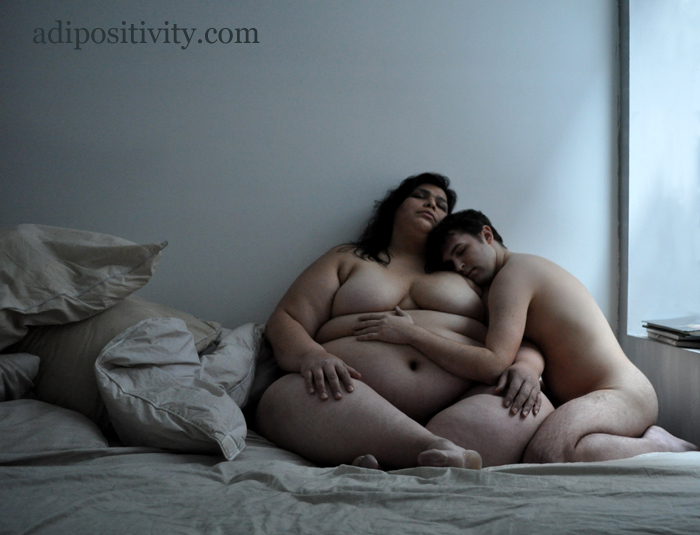
Though almost all of your photographs are nudes (or feature the subjects in "revealing" clothing), your erotic photographs, particularly the 2011 Valentines Day series, are particularly striking. Do you see those photographs as particularly subversive? Why do you think it is important to portray fat people as (healthy) sexual beings?
Love and sex are as important to the wellbeing of fat folks as they are to those of smaller size, and displays of such commonalities are important humanization tools. Both groups need to see more of them. Everyone wants to see their lives represented in media. Fat people's lives include love and sex, yet while the largest percentage of entertainment is about love and sex, rarely are the subjects fat. I'd really like to knock a few dents into that paradigm. Plus, it's hot.

Not only do you feature a variety of body sizes and types, you seem to take care to feature women of all races, and I've been noticing more photographs of male bodies and of gay couples. What role do your photographs (and fat acceptance more generally) play in promoting diversity across a range of intersectionalities?
I wouldn't presume to be qualified to answer this with any accuracy, but I believe I understand (as much as is possible for a white, cisgendered hetero to understand) the reluctance to get involved in a campaign in which you don't see people who look like you already present. Factor in that if you're part of another marginalized population, your energies may be spent correcting injustices elsewhere. But one would hope that seeing one's self visually represented in a fat acceptance effort might encourage more queers, transfolk, people of color, the disabled, men, etc. to become a part of the movement. I think we can all learn from one another's struggles without it turning into the oppression Olympics. It's not a contest, and weight-based discrimination is most certainly not "the last accepted form of prejudice." Sorry, Oprah. It just isn't.
Recent comments
2 years 29 weeks ago
2 years 44 weeks ago
2 years 44 weeks ago
2 years 50 weeks ago
3 years 4 weeks ago
3 years 4 weeks ago
3 years 4 weeks ago
3 years 6 weeks ago
3 years 6 weeks ago
3 years 6 weeks ago